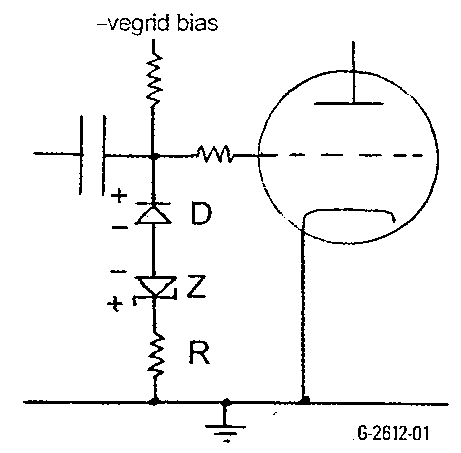Watch out, my scanner's up again... 
Here's the simplified version of the circuit from the February issue of audioXpress magazine:

This circuit or a similar one may already be in use over at the 18W Marshall page, I don't know - at any rate, here it is.
According to the article, the component values can be adjusted to allow positive grid shift during heavy drive conditions. This would allow the output stage to be idle-biased a bit cooler for a crisp and dynamic clean sound with the guitar turned down, with an automatic shift to a hotter bias point kicking in during overdrive for a more compressed/"woodier" dirty sound if desired; might sound pretty good!
I've got the complete amp schematic here too; I'll scan & post it if anyone's interested.
Ray

Here's the simplified version of the circuit from the February issue of audioXpress magazine:
This circuit or a similar one may already be in use over at the 18W Marshall page, I don't know - at any rate, here it is.
According to the article, the component values can be adjusted to allow positive grid shift during heavy drive conditions. This would allow the output stage to be idle-biased a bit cooler for a crisp and dynamic clean sound with the guitar turned down, with an automatic shift to a hotter bias point kicking in during overdrive for a more compressed/"woodier" dirty sound if desired; might sound pretty good!
I've got the complete amp schematic here too; I'll scan & post it if anyone's interested.
Ray

 ), I saw a 12AX7 grid source over 2mA of current (!) which seems promising.
), I saw a 12AX7 grid source over 2mA of current (!) which seems promising.
Comment